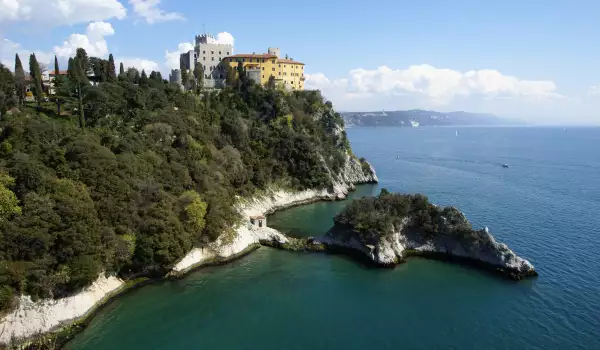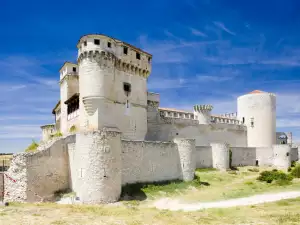Duino Castle

Duino Castle or Castello di Duino is an old palace, standing on a rocky promontory in the Adriatic seaside Italian province of Trieste. The view, which is revealed in front of visitors Duino is just fascinating - the panorama encompasses the entire Gulf of Trieste and sank in the distance of the sea. Duino is located in the eponymous Italian city located in northeastern Italy, as part of the region Duino-Aurisina.
Duino is actually a complex of two castles, both are built on a mountain nose, which is part of the mountain Kars. One building was known as the Old Castle and dates from the 11th century. It belonged to the patriarchy of Aquileia, but is now in ruins and is not accessible for tourist visits.

New Duino Castle was erected in the 14th century by order of the family Waldsee. The medieval structure was built on the foundations of an old Roman military outpost called Castellum Pucinum. Emperor Diocletian visited Duino in 3rd century. The oldest part of the castle dates from around 1000
In the 15th century, the castle was almost destroyed as a result of Turkish attacks. In 1483 the owner of Ramberto III Waldsee died, and Duino falls in the hands of the House of Austria. In 1508 the medieval castle is in possession of the Venetians and under the leadership of Emperor Maximillian, and has been carefully restored.
Since 17 century castle Duino is family owned by the Taxis, who reside in it to this day. In the following centuries this influential family greets guests as extremely influential as Johann Strauss and Franz Liszt, Empress Elizabeth of Austria, Habsburg Archduke Maximillian and his wife Charlotte of Belgium, Archduke Franz Ferdinand of Austria, Mark Twain, Rilke and many others.

The castle Duino spent quite some time with Rainer Maria Rilke - Austrian poet, considered one of the most significant artists of poetry from late 19 and early 20 th century.
After 1910 Rilke moved briefly to North Africa, then for two years established as a guest of Princess Marie von Thurn und Taxis castle Duino. Here, at the very Adriatic coast he began to write his famous "Duinski Elegies" (1912-1922) and cycle thinking 'sonnets to Orpheus "(1923), which is considered lyrical confession of the poet.















